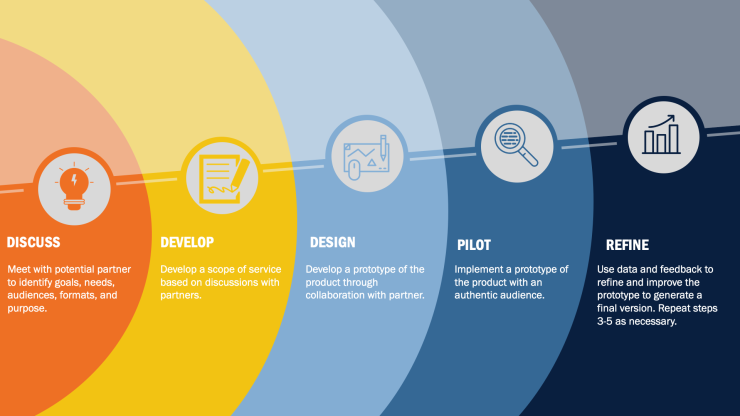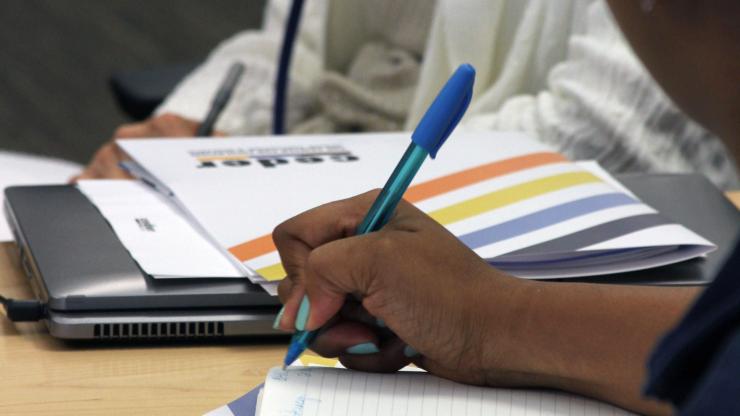Cultivating Cooperative Relationships for a More Sustainable Future
CEDER nourishes sustainability education by sharing resources and building a network of cooperative relationships by supporting programs across Michigan, Indiana, and the Carolinas.
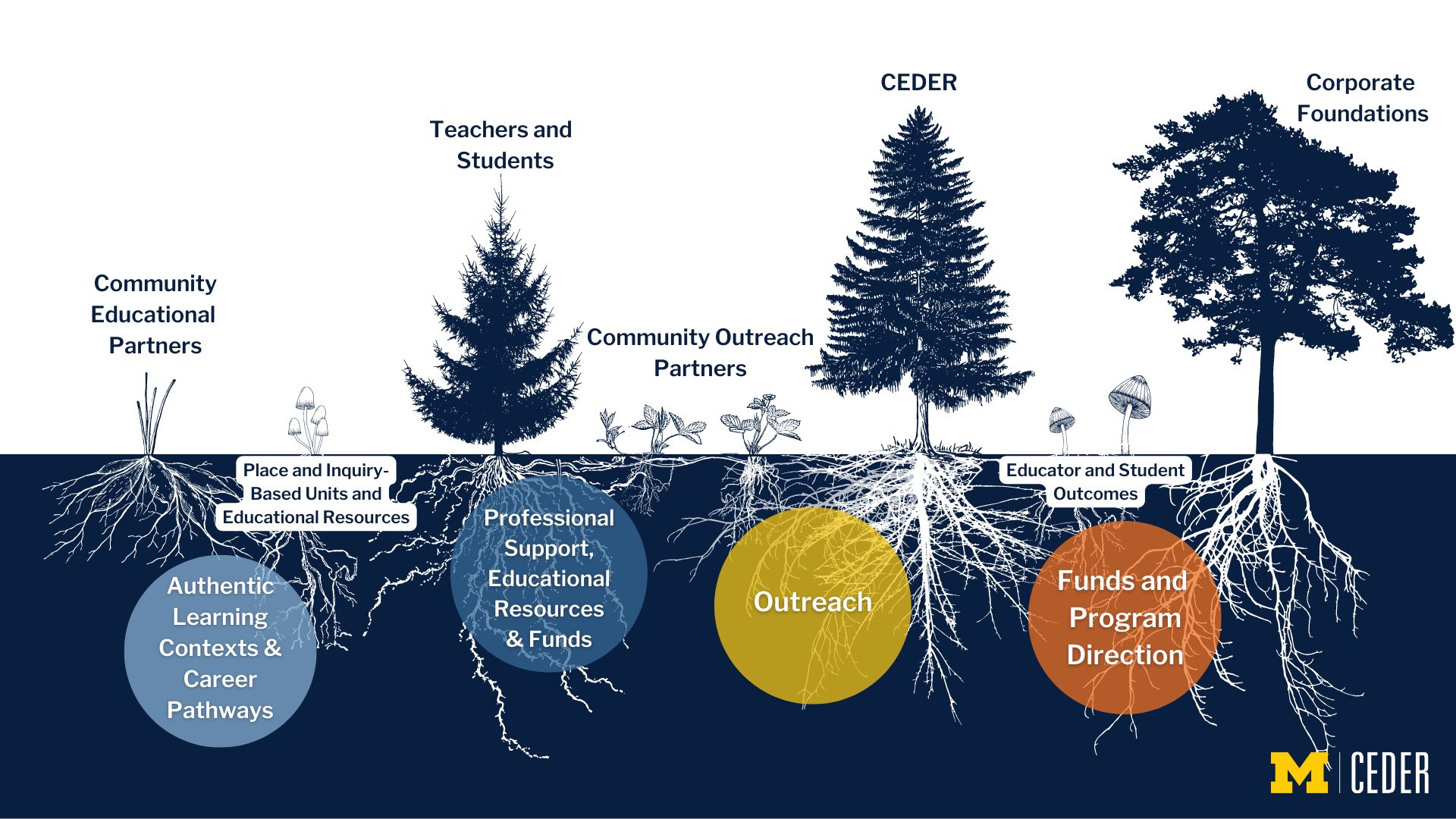
In order to support educators and students, CEDER manages three corporate-sponsored programs. The Dow Innovation Teacher Fellowship (DITF) and Bosch Eco and STEM Teacher (BEST) Grant support teachers in implementing inquiry- and place-based education through offering teacher mini-grants, providing teacher professional development, and (in the case of DITF) providing a funded teaching fellowship. CEDER's newest program, a Dow-funded Youth Sustainability Leadership Council, develops future sustainability leaders and connects youth to green career pathways.
The interactions and relationships enacted by these programs can be compared to a forest ecosystem and the way its underground fungal network supports the various plants and trees aboveground. You can see this metaphor illustrated in the graphic [above].
In the following sections, we will provide one example from each of our three programs.
Funds and Program Direction
When working with a funder, it's important to work on developing trusting relationships, and to establish clear, distinct roles. In relation to the BEST Teacher Grant, the Bosch Community Fund staff team is responsible for the overarching program design, providing direction for program scaling and strategy, and providing technical assistance with communication and branding. The CEDER team is responsible for tasks such as the day-to-day administration, contributing our educational expertise to supporting program participants, and the evaluation and improvement of the program.
Outreach
The BEST Teacher Grant practices Distributed Leadership in our outreach model, both within our team and in the districts who work with us. Representatives from our partner districts may sign up to become BEST Champions who communicate more directly with their school colleagues and support applicants. While the CEDER team does provide individualized support for applicants as well, we have found that the most powerful indicator of successful applications is teacher-to-teacher support.
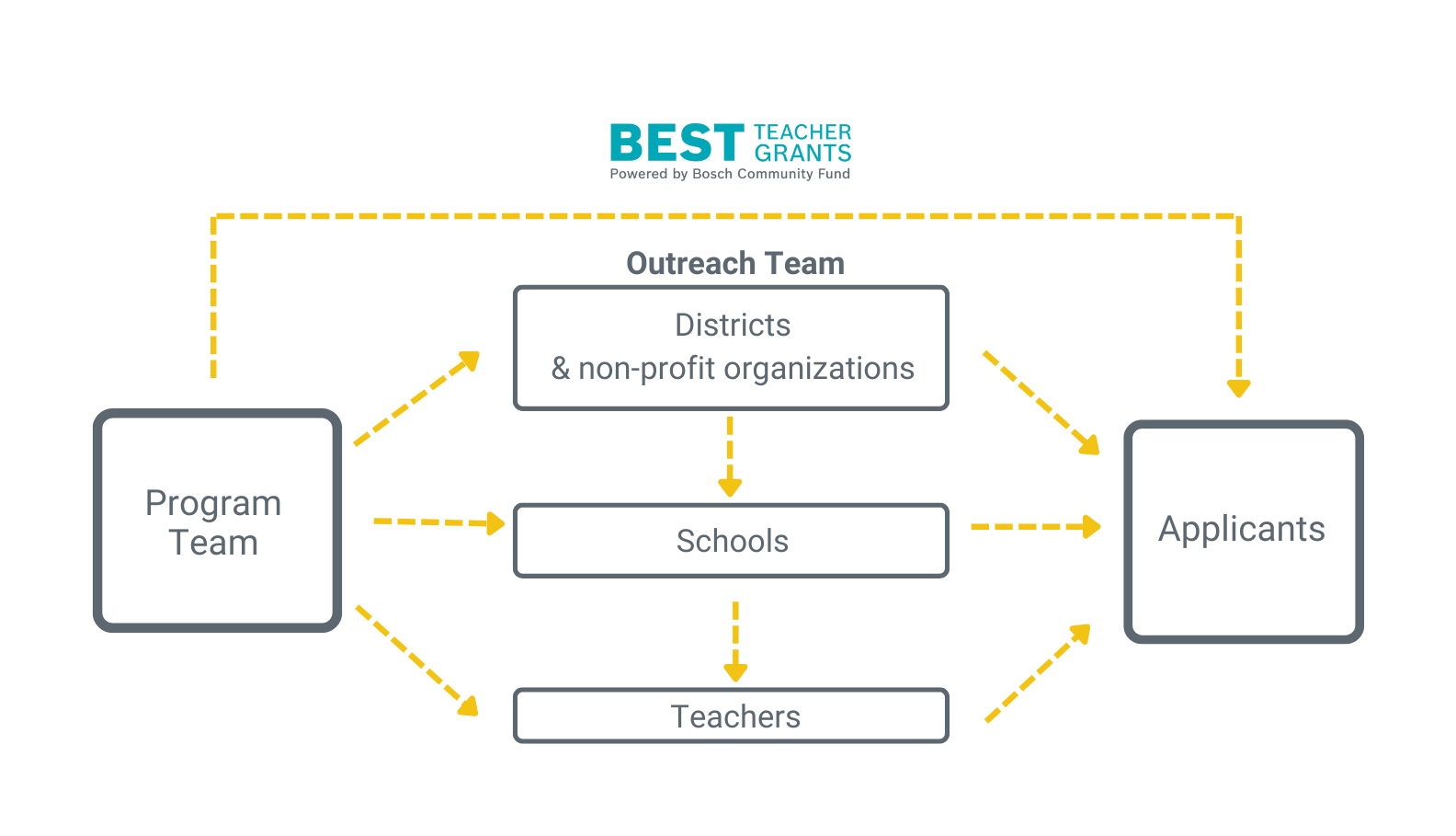
Professional Support, Educational Resources, and Funding
The Dow Innovation Teacher Fellowship provides year-round support for K-12 teachers of all disciplines with the goal of increasing the quantity and quality of place-based sustainability education in the Great Lakes Bay Region of Michigan. The program kicks off in the summer with hybrid professional development sessions that help Fellows build sustainability content knowledge and place-based pedagogical expertise. Fellows receive professional development credits and a stipend to recognize their time and commitment to the program. Throughout their Fellowship year, teachers are engaged in virtual check-ins and provided with connections to community partners and curated resources for their specific grade level, subject area, and topic.
Authentic Contexts and Career Pathways
In the pilot year of the Youth Sustainability Leadership Council, students led the way through a summer experience that focused on Youth Voice, Sense of Place, and Environmental Justice. Council members decided on two overlapping, yet different field experiences with community partners: Trail Stewardship with Little Forks Conservancy and Kayaking/Water Quality testing at Chippewa Nature Center. Students also heard from local environmental professionals working in environmental and justice fields. At the conclusion of the summer, students self-reported increased feelings that sustainability and DEI were connected and that they had an increased interest in pursuing a career related to sustainability.
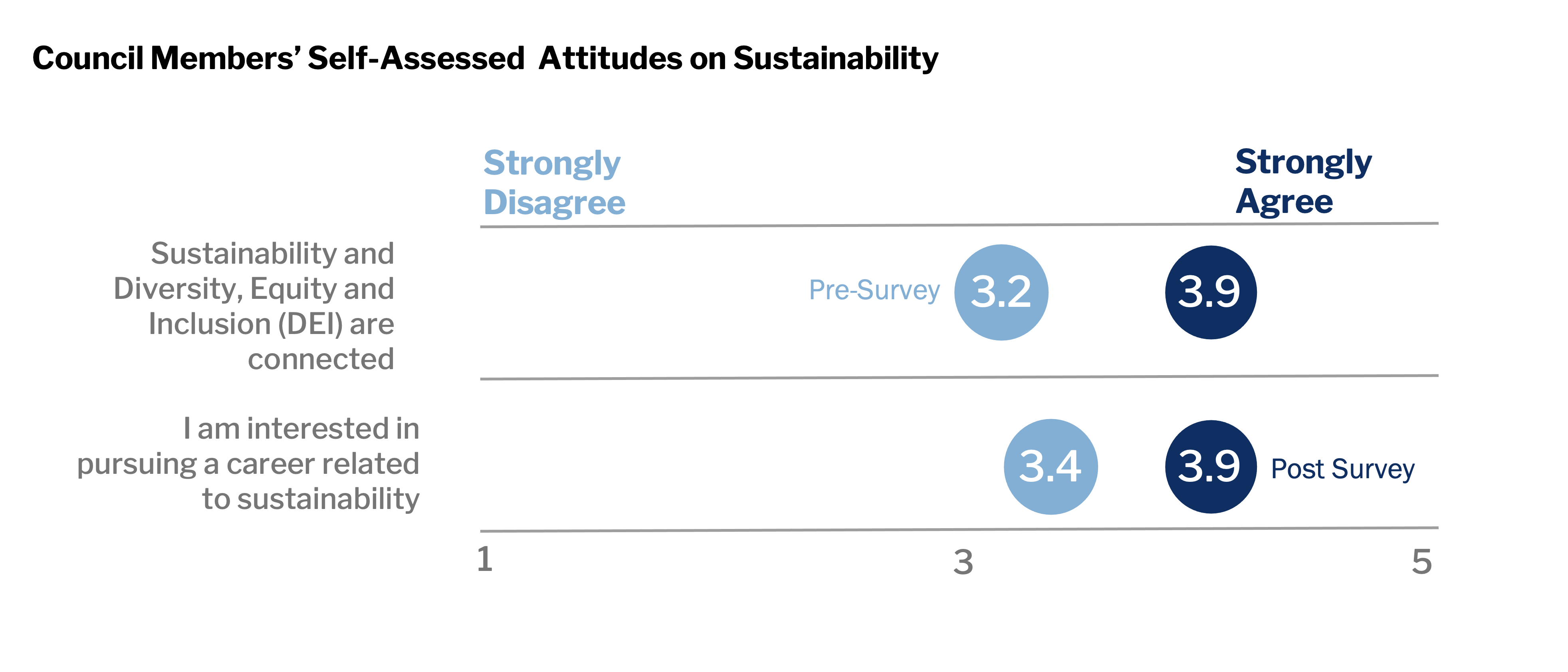
In the metaphorical ecosystem of CEDER's relationships, you may notice several groups of mushrooms growing beneath the trees. These “fruiting bodies” are some of the deliverables that result from our collaborative work.
Place and Inquiry-Based Units and Educational Resources
Once teachers complete their year with DITF, there is a culminating celebration where Fellows share about their completed units with each other, community partners, incoming Fellows, and program staff. Unit materials submitted by Fellows at the end of their Fellowship year are added to a shared digital library. As this library grows, more and more incoming Fellows have relevant models to reference that can help inspire their own sustainability unit plans.
Educator and Student Outcomes
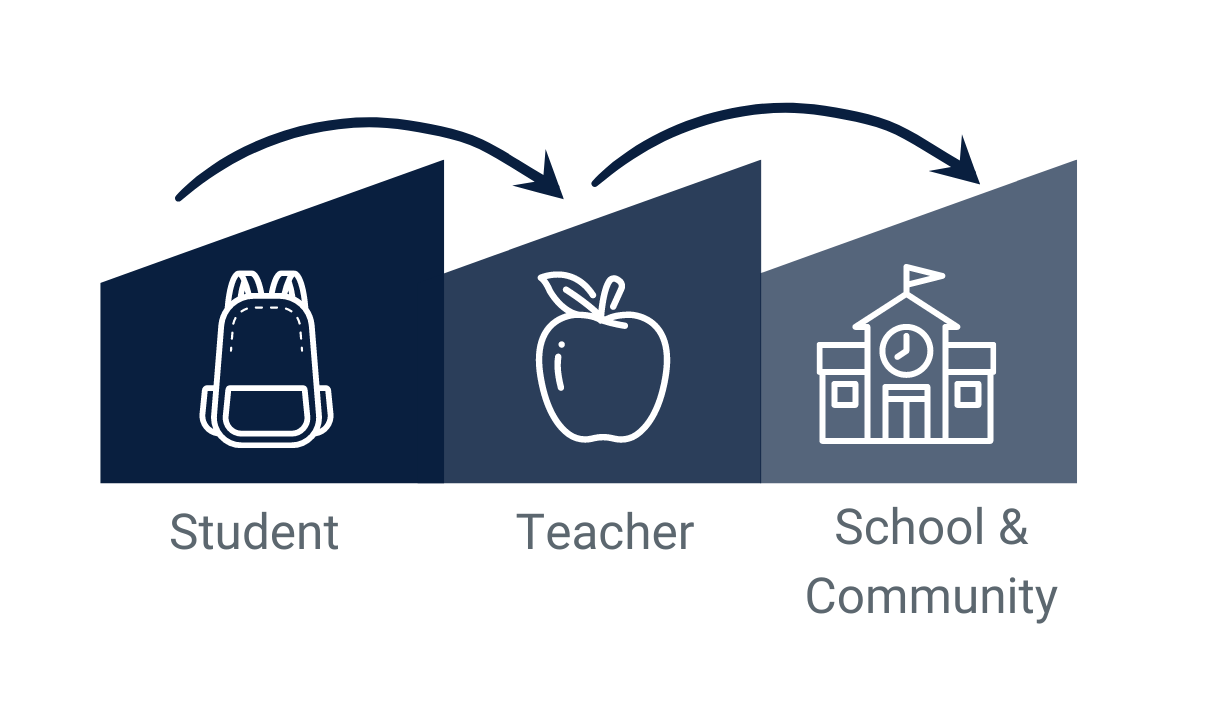
The CEDER team measures outcomes for the BEST Grant on the level of the student, the teacher, and the local school and community. We conduct an annual mixed methods evaluation that matches clear quantitative data points with rich qualitative data from grantees and other important stakeholders. For example, in the 2021-22 grant cycle, 82% of grantees reported that their grant project had a high impact on their students. In our qualitative analysis of teacher reports, we learned that the grants supported student engagement and enjoyment, exposure to STEM and sustainability topics, and the development of technical and interpersonal skills.
“I found that special education students seemed to really enjoy working with Snap Circuits the most. They traditionally feel marginalized in science due to their struggles with math and/or reading, but with the Snap Circuits they really shined.”
—Wendy Johnson, Kentwood Public Schools
This blog was written by
- Emily Schaller, Dow Innovation Teacher Fellowship Program Manager
- Krysten Dorfman, Sustainability Programs Assistant
- Cathy Hearn, Program Improvement Specialist
Design

